Honda Sensing embodies Honda's enduring philosophy of "Safety for Everyone." It is an advanced driver assistance system that elevates your driving experience by enhancing situational awareness and taking action to prevent collisions. Introduced as the industry's first automatic emergency braking system in 2006, it has evolved into a comprehensive suite of driver assistive technologies. Debuting on the 2015 Honda CR-V, Honda Sensing continues to lead the way, bridging the gap to future automated driving.
Its suite of features includes Collision Mitigation Braking System (CMBS) with Forward Collision Warning, Road Departure Mitigation with Lane Departure Warning, Lane Keeping Assist System, and Adaptive Cruise Control with Low-Speed Follow. Some newer Honda models even incorporate Traffic Jam Assist, Traffic Sign Recognition, and a driver attention monitor. Originally employing cutting-edge "sensor fusion" technology, Honda Sensing has evolved.
The 11th-generation Civic expanded its detection capabilities with a new version featuring a single-camera system and a faster processor. It now swiftly identifies pedestrians, bicyclists, road signs, and more. With improved functions like smoother Lane Keeping Assist and natural Adaptive Cruise Control, Honda Sensing is your intuitive partner for safer, more confident driving.
Related Reading: How To Fix Honda Sensing Problems: A Comprehensive Guide
Updated Honda Sensing Features And How They Work
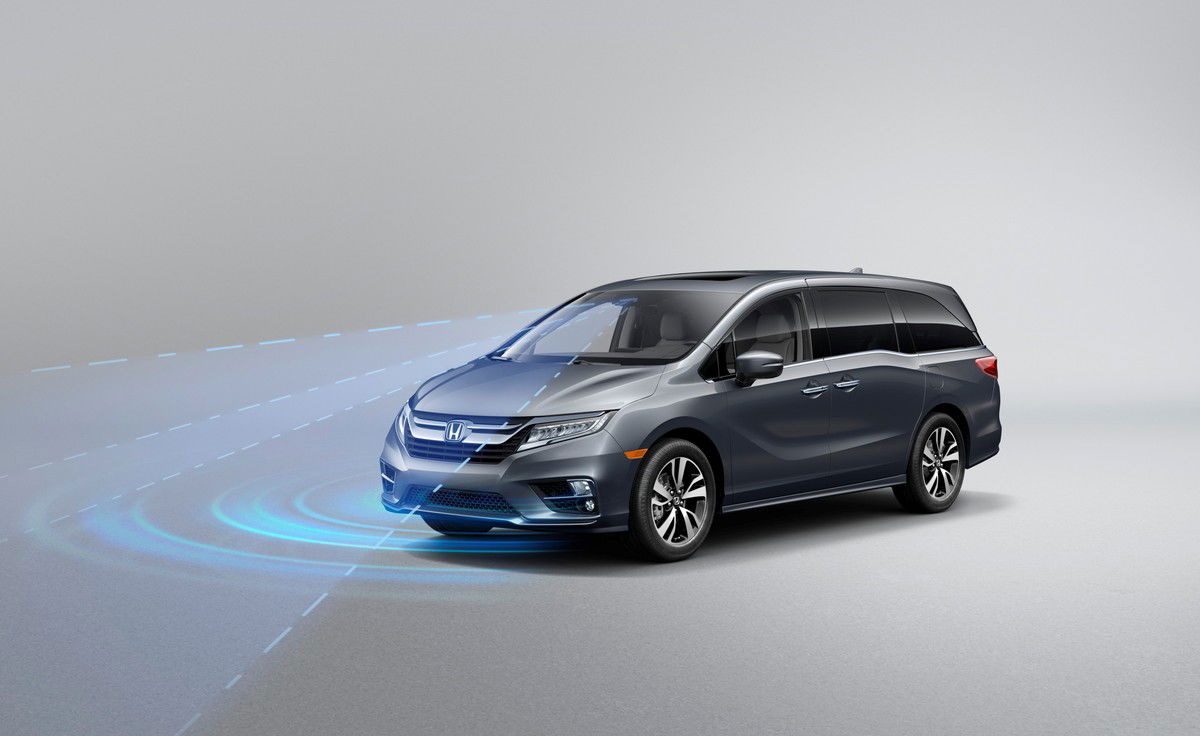
Collision Mitigation Braking System (CMBS):
Honda's innovative Collision Mitigation Braking System (CMBS) is your vigilant co-pilot, designed to anticipate potential collisions and take immediate action to minimize their impact.
When CMBS senses a collision risk, it promptly alerts the driver. If the driver fails to respond timely, CMBS automatically apply emergency braking to either prevent or reduce the severity of the impending collision.
On select Honda models, CMBS goes a step further by incorporating pedestrian sensing and automatic emergency braking. This remarkable system relies on a combination of cutting-edge technology—a millimeter wave radar unit and a monocular camera. These sensors work in unison to identify vehicles and pedestrians, evaluating factors like their nature, distance, and speed to gauge the likelihood of a collision.
In the 11th-generation Civic, the monocular camera, accompanied by powerful software, achieves similar results for an extra layer of security. Upon detecting a potential collision, CMBS issues visual and audible alerts to make the driver aware of the danger.
These alerts display on the digital instrument panel and the optional Head-Up Display. If CMBS determines that a collision is imminent and corrective action is not taken, it steps in by applying the brakes to reduce the vehicle's speed and minimize collision forces.
While CMBS is a powerful safety feature, Honda notes it may not always prevent every collision, and its response may vary depending on the specific circumstances. The system may also skip some alert stages and directly engage the brakes if the situation demands it.
Forward Collision Warning (FCW) — Integrated with CMBS:
Working collaboratively with CMBS, Forward Collision Warning (FCW) utilizes the monocular camera to identify potential obstacles, whether they are vehicles or pedestrians, ahead of your vehicle.
FCW assesses the speed differential between your vehicle and the object. It delivers an audible alert and displays a visual warning on the instrument panel and optional Head-Up Display if a collision appears imminent. If CMBS is activated and the driver fails to act, the system will automatically apply the brakes when a collision is imminent.
Drivers have the flexibility to customize the distance at which FCW alerts are triggered, choosing between "Long," "Normal," or "Short" settings. It's important to note that FCW may not detect all objects in all conditions, as its accuracy is influenced by factors like weather and vehicle speed.
Road Departure Mitigation (RDM) with Lane Departure Warning (LDW):
Honda's Road Departure Mitigation (RDM) system, complemented by Lane Departure Warning (LDW), is your guardian against unintended lane departures. The monocular camera plays a central role in this system, identifying solid or dashed lane markings, Botts' dots, and cat's eye markers.
Depending on the Honda model, RDM can employ steering force, braking, or both to keep your vehicle within its lane. When the monocular camera recognizes lane features and detects that the vehicle is about to drift out of the lane, it activates a visual Lane Departure Warning (LDW) on the instrument panel.
If the driver doesn't respond, the system escalates by issuing a warning and offering corrective action. This can include steering assistance and/or braking to guide the driver back on track. RDM offers a personalized experience with a customizable initial warning, allowing drivers to choose from options like a steering wheel vibration or an audible alert.
You can further tailor the system to your preferences, selecting from these modes:
1. Normal mode - Activates steering assist and a steering wheel vibration or audible warning simultaneously.
2. Wide mode - Initiates a steering wheel vibration or audible warning before steering assist.
3. Narrow mode - Activates steering assist before a steering wheel vibration or audible warning (if equipped).
4. Warn Only mode - Issues a steering wheel vibration or audible warning without steering assist.
Lane Keeping Assist System (LKAS):
Experience a more relaxed highway journey with Lane Keeping Assist System (LKAS), designed to ease the strain of steering corrections at speeds between approximately 45 and 90 mph. LKAS employs a camera to track lane markings and leverages electric power steering (EPS) to guide the driver towards the center of the lane.
Tailored for the intricacies of U.S. roads, the system relies on the monocular camera to recognize solid or dashed painted lines, Botts' dots, and cat's-eye markers. When LKAS detects the driver drifting from the lane's midpoint, it provides corrective steering torque to help achieve proper lane positioning.
Adaptive Cruise Control (ACC):
Adaptive Cruise Control (ACC) empowers you to set your desired speed and following distance behind a detected lead vehicle, allowing the use of cruise control even in light highway traffic.
ACC operates with the aid of millimeter wave radar and a monocular camera, continuously gauging the distance to the vehicle ahead and adjusting your vehicle's speed to maintain the selected following interval.
The 11th-generation Civic, with its monocular camera and enhanced software, mirrors this functionality. You can select from a range of intervals—short, medium, long, or extra-long. When necessary, the system automatically applies the brakes to maintain your chosen interval.
Low-Speed Follow (LSF):
Low Speed Follow (LSF) extends ACC's adaptive following capabilities to stop-and-go traffic, even coming to a complete halt if required. The functionality encompasses various scenarios:
- When a vehicle is detected ahead, it decelerates automatically, controlling the following distance.
- If the lead vehicle stops, your vehicle halts as well.
- When the leading vehicle accelerates from a stop, your vehicle resumes following once you engage the SET or RES switch or apply the accelerator pedal.
- If another vehicle merges between your vehicle and the preceding one, ACC with low-speed follow shifts focus to the closest detected vehicle.
- Should the lead vehicle exit the lane, the ACC system maintains the previously set cruise-control speed (ranging from 25 to 90 mph).
Traffic Jam Assist (TJA):
Working hand in hand with LKAS, Traffic Jam Assist (TJA) offers light steering support, even in complete stops if necessary. TJA operates at speeds below 45 mph, helping you maintain proper lane positioning during slower, congested traffic conditions.
Activation requires both ACC and LKAS to be engaged via the steering wheel, functioning when the system detects both a preceding vehicle and lane markers.
Traffic Sign Recognition (TSR):
The camera-based Traffic Sign Recognition (TSR) feature provides valuable assistance in identifying speed limit signs in select Honda models.
The monocular camera automatically recognizes speed limit signs and promptly displays this information on the instrument panel, as well as the optional Head-Up Display. The system functions immediately after passing a sign, and drivers have the option to choose between TSR and the navigation system's speed-limit information.
Driver Attention Monitor:
Select Honda models are equipped with a Driver Attention Monitor designed to continuously assess driver behavior and identify signs of inattention or fatigue.
Using four gradients, this advanced feature utilizes input from Electric Power Steering (EPS) to gauge the frequency and severity of the driver's steering inputs and their level of alertness.
When activated, the Driver Attention Monitor starts with a coffee cup icon and a 4-level bar graph displayed on the digital instrument panel. Full attention is indicated when all four white bars are illuminated.
As the driver's attention wanes, fewer bars light up. When only two bars remain, a message urges the driver to take a break. Should attention dwindle to just one bar, there’s beeping and steering wheel vibrations, prompting the driver to refocus or take a rest break.
Related Reading: 11 Common Honda Sensing Problems and How to Fix Them: A Comprehensive Guide
More Honda's Advanced Safety Technologies

Honda Parking Pilot:
Experience effortless parking, whether parallel or exiting from a parking space, with the Honda Parking Pilot. This system takes control of steering, acceleration, braking, and gear shifting to improve smooth parking maneuvers.
It provides a visual representation of your vehicle's movement and its surroundings. Keep in mind that the driver retains control of vehicle speed by operating the brake as needed.
Cross Traffic Monitor:
The Cross Traffic Monitor acts as your extra set of eyes when you're backing out of a parking space or garage. It detects approaching vehicles from both the left and right sides behind your vehicle, notifying you with an audible warning and a display indicator to indicate the direction of the approaching vehicle.
Blind Spot Information System:
The Blind Spot Information System identifies vehicles in your rear-quarter blind spots and alerts the driver by illuminating an indicator on or near your vehicle's side mirror. If you signal a turn in the direction of a detected vehicle, the indicator flashes, and an audible alarm sounds to keep you aware and safe.
Unintended Acceleration Mitigation (Available as a dealer option):
This system is designed to recognize unintended acceleration based on the driver's pedal inputs. If such acceleration is detected, it intervenes by suspending acceleration and issuing both audible and visual warnings on the display.
Parking Sensor System:
Honda's Parking Sensor System keeps you aware of obstacles in your vehicle's vicinity. Using sensors, it provides audible warnings and visual alerts on the display, indicating the distance between your vehicle and the obstacles.
Adaptive Driving Beam:
Driving on dark roads at night is safer with the Adaptive Driving Beam system. It automatically switches from low to high beams on roads without streetlights. When it detects preceding or oncoming vehicles, it adjusts the headlight's lighting area to ensure your visibility without blinding other drivers.
Auto High-Beam:
The Auto High-Beam system enhances night-time driving. It automatically switches between low and high beams based on road conditions. When it senses oncoming or preceding vehicles, it adjusts to low beams to prevent glare.
Lead Car Departure Notification System:
When, for example, your vehicle stops at a red light, the Lead Car Departure Notification System alerts you if the vehicle ahead begins moving and you haven't pressed the accelerator. It emits both audible and visual alerts.
Pedestrian Collision Mitigation Steering System:
This system is designed to prevent collisions with pedestrians. If your vehicle veers towards pedestrians, it issues audible and visual warnings and offers steering input to prompt collision avoidance actions.
Low-Speed Brake Function:
When moving at low speeds (approximately 1.24 mph to 6.22 mph) and sensors detect an obstacle, .the Low-Speed Brake Function assists in avoiding collisions by controlling the brakes.
Rear Collision Mitigation Throttle Control:
When your vehicle stops or moves backward at low speeds (6 mph or less) and detects an obstacle behind it, the Rear Collision Mitigation Throttle Control prevents sudden acceleration and issues alerts.
Collision Mitigation Throttle Control:
This system prevents sudden acceleration when your vehicle is stopped or moving forward at low speeds (6 mph or less) and detects an obstacle ahead, ensuring safety and providing warnings.
New Honda Models With Honda Sensing
2024 Honda HR-V (Standard on all trims)
2024 Honda CR-V (Standard on all trims)
2024 Honda Passport (Standard on all trims)
2024 Honda Pilot (Standard on all trims)
2024 Honda Accord (Standard on all trims)
2024 Honda Civic Sedan/Hatchback (Standard on all trims)
2024 Honda Civic Si (Standard)
2024 Honda Odyssey (Standard on all trims)
2023 Honda Ridgeline (Standard on all trims)
Related Reading: The 10 Coolest Features Of The 2022 Honda Accord
Honda Sensing 360
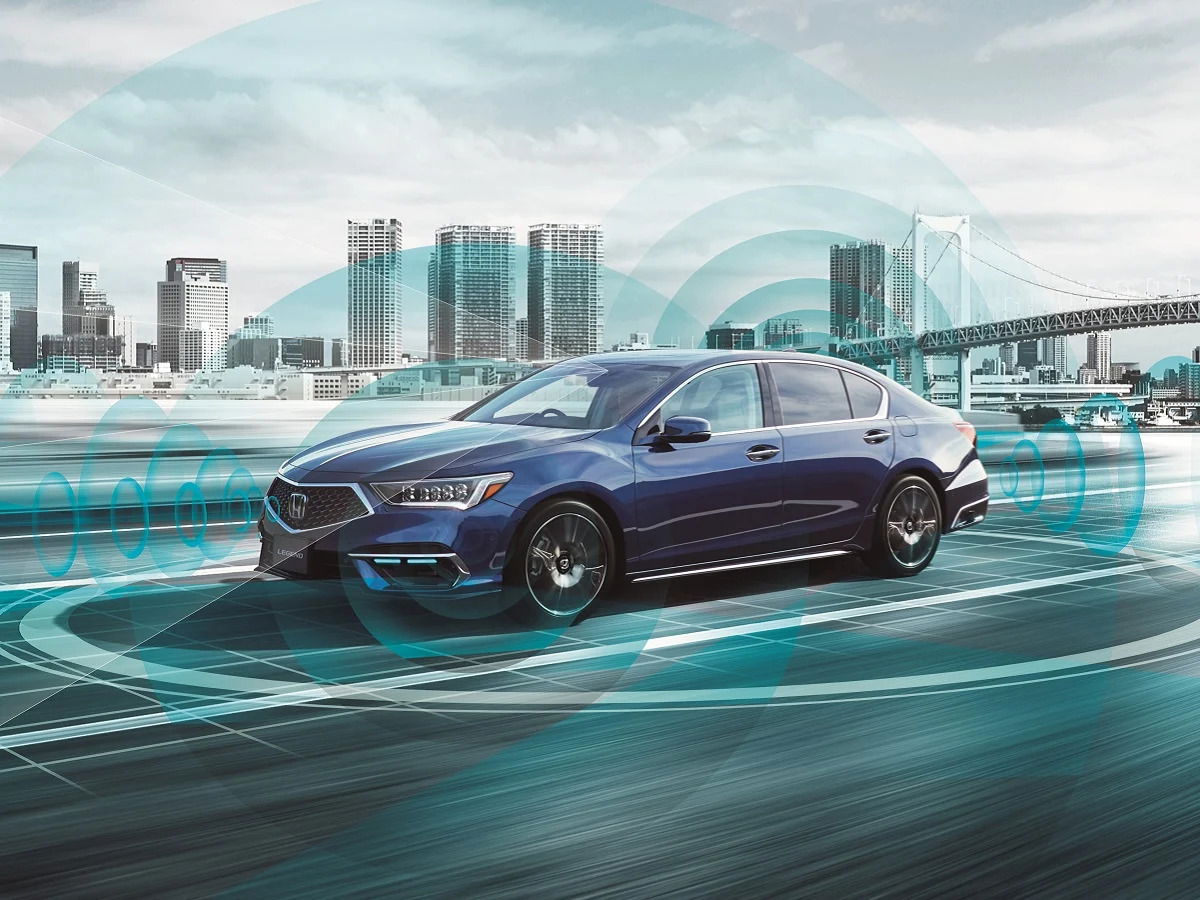
Drawing from the automaker’s extensive know-how in Level 3 automated driving technologies, Honda SENSING 360 takes safety to new heights by extending its sensing range.
This omnidirectional sensing approach erases blind spots, creating a shield against potential collisions with both vehicles and pedestrians. The result is a reduced burden on the driver and enhanced peace of mind while on the road.
To achieve true 360-degree sensing, Honda SENSING 360 integrates a total of five millimeter-wave radar units. These units are strategically positioned at the front and each corner of the vehicle, working in tandem with the existing front camera used in the original Honda SENSING.
Each sensor collects external conditions data, enabling the system to recognize, predict, and make informed decisions to enhance safe driving.
Honda Sensing 360 Features

1. Collision Mitigation Braking System (CMBS) - Extended Range:
Honda SENSING 360's CMBS boasts an extended range of detection, covering all directions around your vehicle. When turning at an intersection, it detects vehicles and pedestrians, stepping in to help avoid collisions.
2. Front Cross Traffic Warning:
This feature notifies you of vehicles approaching from the sides and front, issuing audio and visual alerts to prevent potential collisions.
3. Lane Change Collision Mitigation:
Change lanes confidently with this system. It assists in avoiding collisions with vehicles in your blind spot, providing audible and visual warnings to keep you safe.
4. Active Lane Change Assist:
When driving on the expressway with ACC and LKAS activated, enjoy steering assistance for lane changes by simply using your turn signal.
5. Adaptive Cruise Control with Low-Speed Follow (ACC) - Cornering Speed Assist:
The ACC adapts to curves by adjusting your vehicle's speed, making cornering a breeze. Remember, Honda SENSING 360 is still a driver-assist system requiring the driver’s vigilance. Plus, road and weather conditions may affect its performance.
Honda SENSING 360 Next-Generation
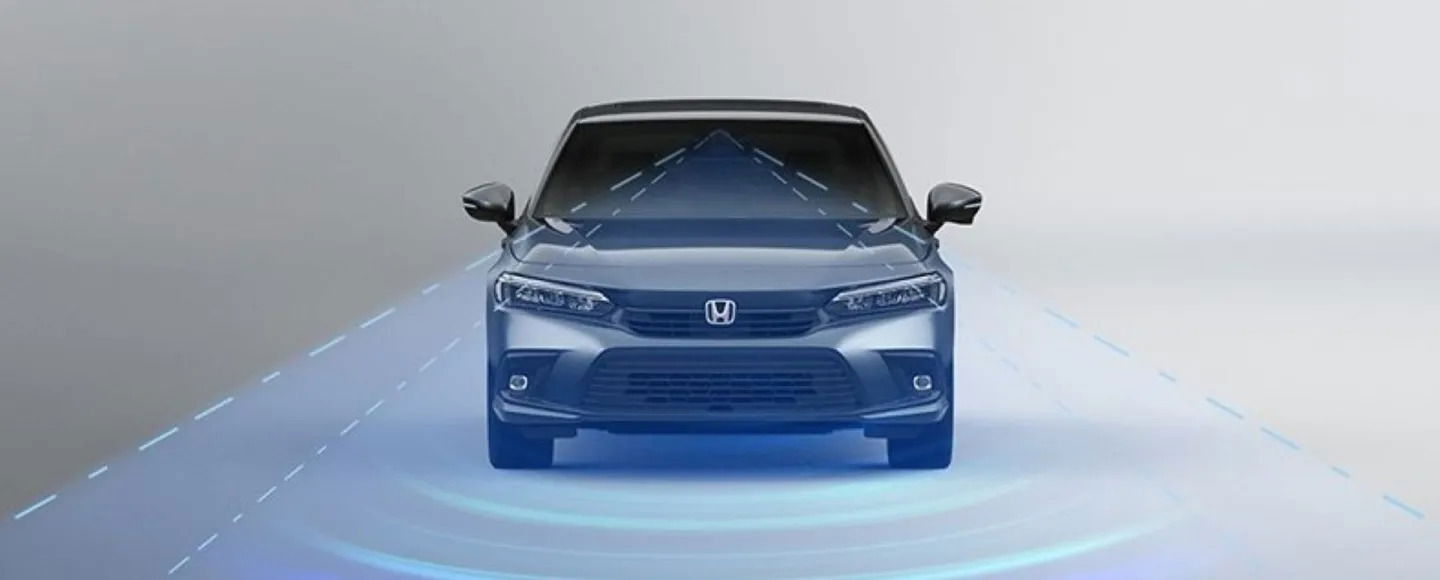
Going beyond omni-directional sensing, the upcoming Honda SENSING 360 introduces cutting-edge innovations. These advancements aim to alleviate driver stress by proactively detecting and preventing collisions.
It's all about precise identification of unusual situations involving the driver, road conditions, and nearby vehicles, ensuring your safety on the road.
Honda Sensing 360 Next-Generation Features

1. Advanced In Lane Driving with Hands-off Function:
This system, powered by high-definition maps and GNSS data, keeps your vehicle centered in the lane while handling acceleration, braking, and steering. It maintains the preset speed, follows the car ahead, and even assists during turns.
2. Advanced Lane Change with Hands-off Function:
This feature detects slow-moving cars, determines safe lane changes, and assists you with turn signals, acceleration, and steering. It also eases lane changes near junctions or lane reductions, reducing driver anxiety.
3. Driver Emergency Support System:
In case of driver disorientation or unresponsiveness, this system issues warnings and, if needed, takes control, decelerating and stopping the vehicle while alerting nearby traffic. It can also connect to an emergency support center.
4. Exit Warning:
Detecting approaching vehicles, this system illuminates indicators to alert occupants. When there's a risk of collision while opening vehicle doors, it flashes indicators and sounds an alarm to ensure safety.
5. Driver Condition & Collision Avoidance Technology:
This system monitors the driver's condition and potential collision risks. If attention wanes, it warns the driver and aids in collision avoidance by adjusting speed and steering.
Honda SENSING Elite
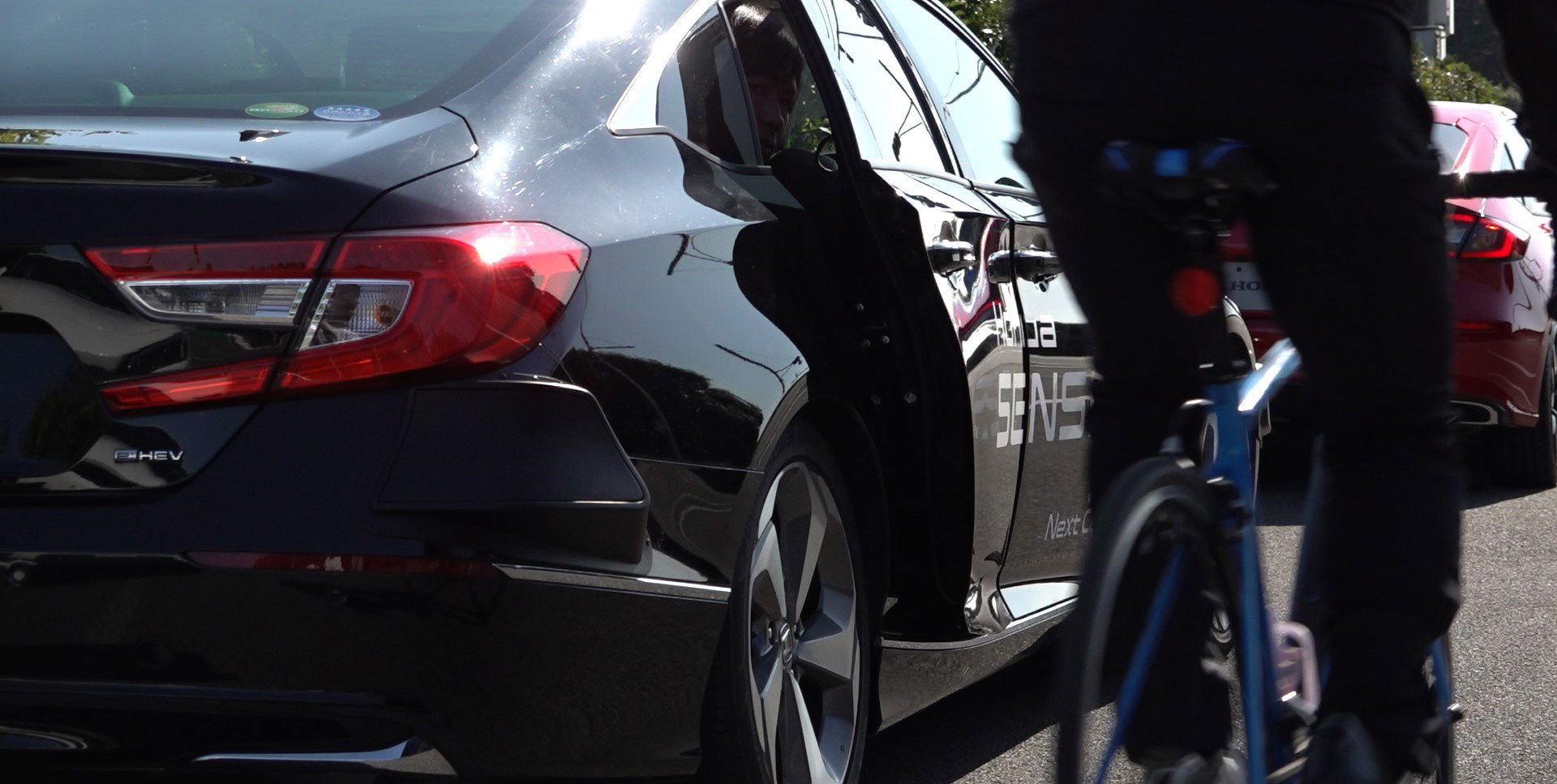
Honda SENSING Elite represents the pinnacle of safety and driver-assist technology, featuring the innovative Traffic Jam Pilot function.
This system not only drives the vehicle but also diligently monitors its surroundings on behalf of the driver. Elite is, in essence, like having an extra set of vigilant "eyes" and a responsive "brain" to control acceleration, braking, and steering.
It achieves this by utilizing three-dimensional high-definition maps, GNSS data, and various sensors to accurately determine the vehicle's position and assess road conditions.
With a 360-degree view of the environment and real-time monitoring of the driver's condition through a dedicated camera, Honda SENSING Elite ensures smooth and high-quality driving that aligns with the driver's preferences.
Honda SENSING Elite Functions
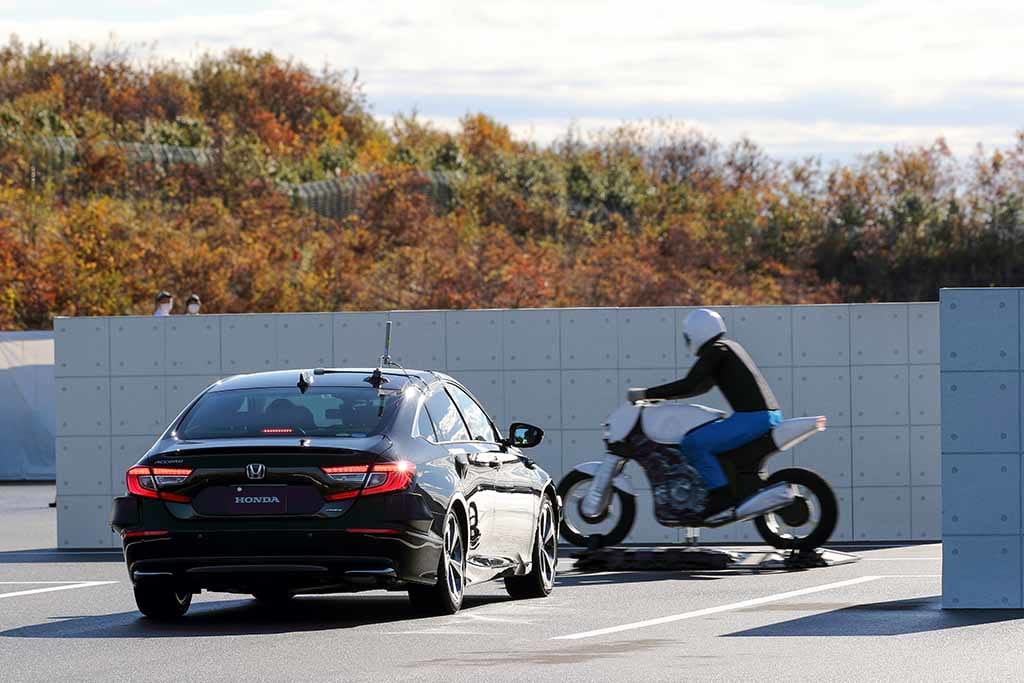
1. Adaptive In Lane Driving:
Drive with confidence as the system takes charge of acceleration, braking, and steering while you keep your hands off the wheel. It maintains your speed and follows the car ahead, making turns a breeze.
2. Active Lane Change Assist with Hands-off Function:
Simply activate this function while using Adaptive In Lane Driving, and it will safely change lanes for you when conditions permit.
3. Active Lane Change with Hands-off Function:
This function complements Adaptive In Lane Driving, ensuring smooth lane changes and helping you navigate junctions, exits, and lane reductions with ease.
4. Traffic Jam Pilot:
When stuck in traffic congestion, the system takes control of acceleration, braking, and steering, maintaining safe following distances. You can even watch TV or operate the navigation system to fend off boredom or stress.
5. Emergency Stop Assist:
When you don't respond to the system's prompts to take control, it emits alerts and initiates vehicle deceleration and stopping while alerting nearby drivers. It can even guide the vehicle to a safe shoulder if available.
6. Lane Change Collision Mitigation:
The system alerts you with audible and visual warnings if it detects a collision risk.
Honda Sensing vs. Toyota Safety Sense: A Comparison
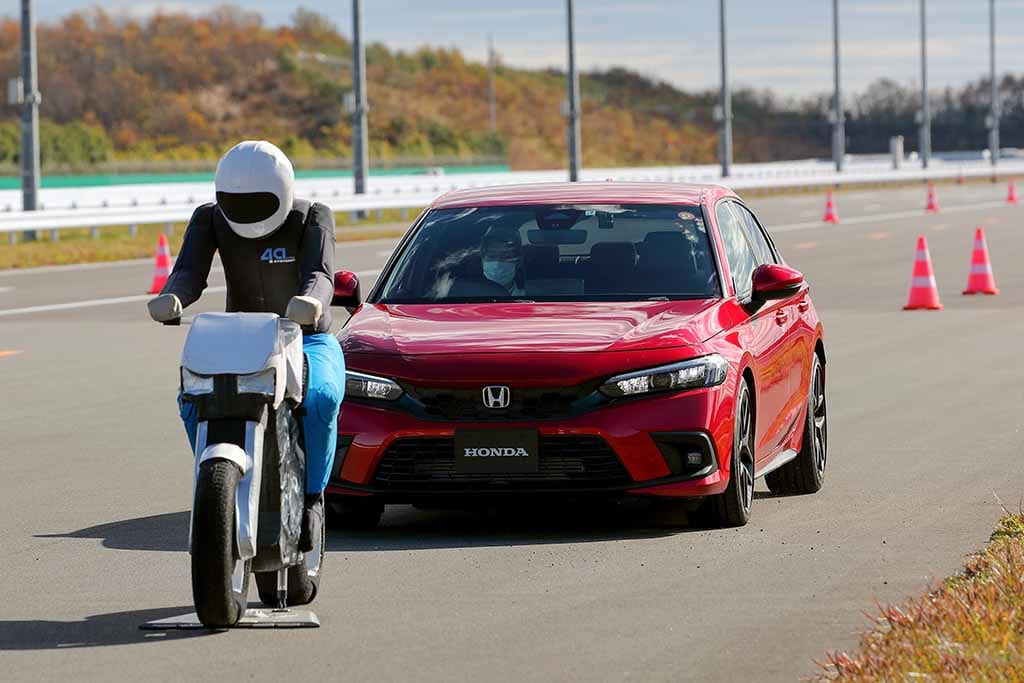
Honda Sensing and Toyota Safety Sense are two leading driver-assist technology suites designed to enhance safety and convenience on the road. While both offer a range of advanced features, there are key differences between them.
Adaptive Cruise Control:
- Honda Sensing: Offers Adaptive Cruise Control (ACC) with the added Low-Speed Follow function. This allows the vehicle to follow traffic in stop-and-go situations.
- Toyota Safety Sense: Equipped with Full-Speed Range Dynamic Radar Cruise Control, which also provides stop-and-go functionality, allowing for smoother traffic navigation.
Lane Keeping Assistance:
- Honda Sensing: Provides Lane Keeping Assist System (LKAS) to help keep the vehicle centered in the lane.
- Toyota Safety Sense: Includes Lane Departure Alert with Steering Assist, which gently corrects the vehicle's path if it drifts out of the lane.
Collision Mitigation:
- Honda Sensing: Features Collision Mitigation Braking System (CMBS) to detect and prevent frontal collisions.
- Toyota Safety Sense: Equipped with Pre-Collision System (PCS) that incorporates Pedestrian Detection, alerting the driver to potential collisions with pedestrians.
Road Sign Recognition:
- Honda Sensing: Offers Traffic Sign Recognition, which recognizes and displays road signs on the vehicle's screen. -
- Toyota Safety Sense: Typically includes Road Sign Assist, which may provide road sign information on the vehicle's display.
Lane Centering:
- Honda Sensing: Some Honda models may have Lane Centering, which helps keep the vehicle centered in the lane. - - Toyota Safety Sense: Offers Lane Tracing Assist in select models, providing more advanced lane centering capabilities.
Availability:
- Honda Sensing: Available on various Honda models, but the specific features may vary by model and trim.
- Toyota Safety Sense: Available on a wide range of Toyota models, with different versions (TSS-C, TSS-P, etc.) offering varying features.
Honda Sensing vs. Toyota Safety Sense: The Verdict
Both Honda Sensing and Toyota Safety Sense aim to improve driver safety and comfort. The choice between them will depend on the specific features you value, the vehicle model you prefer, and your personal driving preferences.
Honda Sensing: Common Problems And Troubleshooting

1. Calibration Issues:
Problem: Sensors may require recalibration, leading to misalignment and inaccurate readings.
Troubleshooting: Contact your Honda dealer or service center for professional recalibration to ensure precise sensor functionality.
2. False Alarms:
Problem: Sensors occasionally detect non-existent obstacles, resulting in false alerts.
Troubleshooting: Ensure sensors and cameras are clean and free of obstructions. If issues persist, consult a Honda service technician for a thorough inspection.
3. Weather-Related Problems:
Problem: Heavy rain, snow, or fog can affect sensor performance.
Troubleshooting: Exercise caution in extreme weather conditions and maintain a clean windshield and sensors. Honda Sensing may temporarily deactivate in severe weather.
4. Unavailability Of Features:
Problem: Some Honda models and trims may not include all Honda Sensing features.
Troubleshooting: Confirm the specific features available on your vehicle. Consider consulting your Honda dealer for possible upgrades.
5. Software Updates:
Problem: Outdated software can lead to compatibility issues.
Troubleshooting: Stay informed about software updates from Honda, and consult your dealer to ensure your system runs the latest version.
6. Driver Awareness:
Problem: Drivers may become over-reliant on Honda Sensing, resulting in the adverse effect of reduced attention.
Troubleshooting: Remember that Honda Sensing is an assistive, not full autonomous system.
7. Maintenance And Cleaning:
Problem: Accumulated dirt or debris on sensors can impair their performance.
Troubleshooting: Regularly clean sensors, cameras, and the windshield to ensure optimal functionality. Use mild, non-abrasive cleaning products.